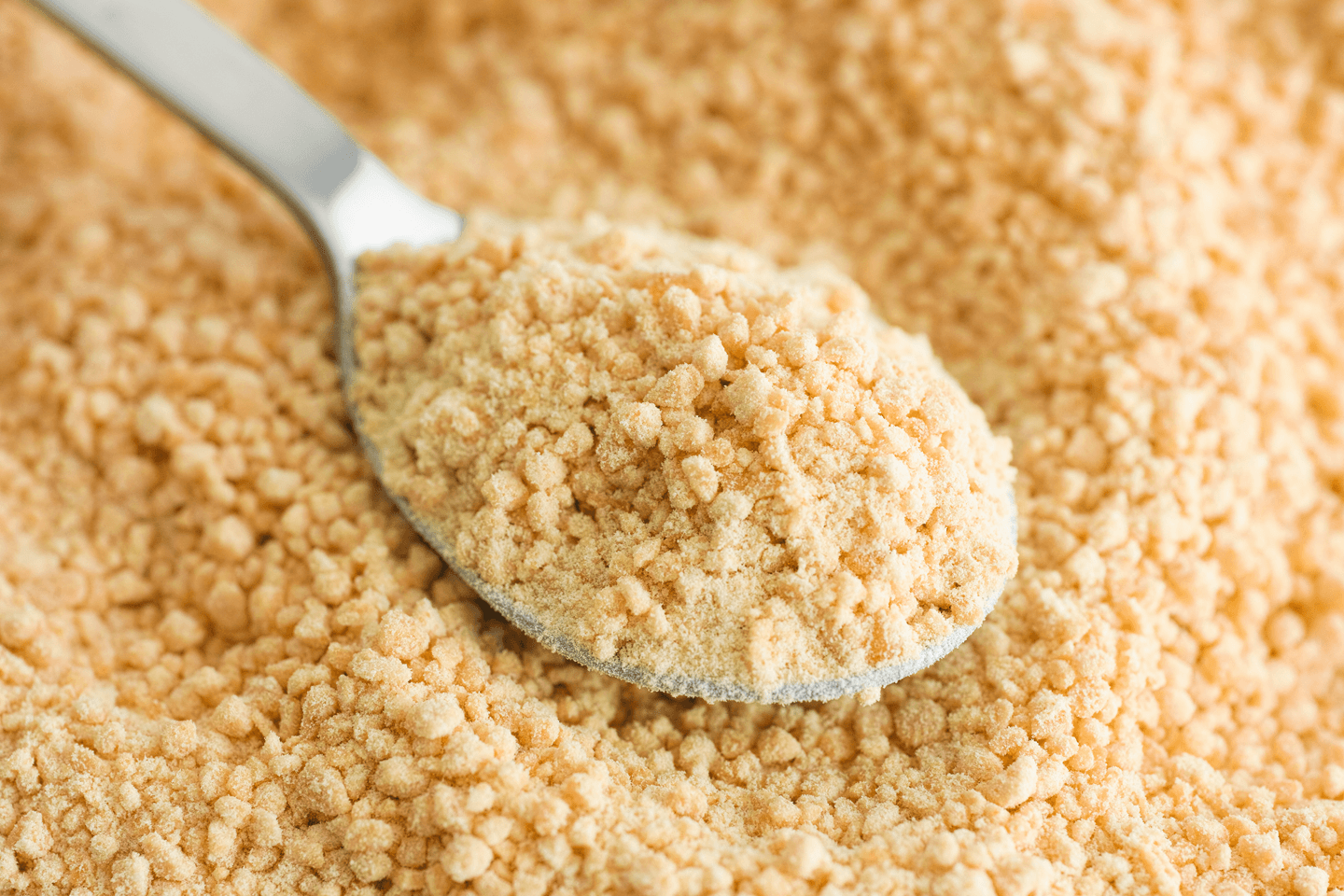
Food Safety
Soy Lecithin Needs “Soy-Based” Labeling, But Usually Doesn’t Contain Soy
Lecithins are fats that are used extensively as emulsifiers in the manufacture of a wide range of foods. The popular food emulsifier (used to make a smooth blend between oil- and water-based ingredients) usually is of vegetable origin and its more common sources are rapeseed, sunflower or soybean oils. Assuming that processing of lecithin is complete, the final product should not contain any protein from its host plant, this includes soy-derived lecithin. However, US FDA regulations require food makers to label lecithin derived from soy, and many customers have asked if soy-based lecithin presents an allergen concern.
What Are Lecithins?
Lecithins are phospholipids (a type of fat), are used in human food as well as in animal feed, and can be found in cosmetics and pharmaceuticals. Chemically, they consist of phosphoric acid and choline, glycerol and one or two fatty acids; they are not proteins. The most prevalent fatty acids in lecithins include linoleic, oleic, palmitic among less common acids. Both the US FDA and European Food Safety Authority (EFSA) have ruled lecithin safe for human and animal consumption. All these chemicals are naturally found in a number of plants, including rapeseed, sunflower and soy. Lecithins are produced by mechanical or solvent-based extraction from their host plants, and other solvent extraction steps can be introduced to remove other lipids. If these processes are followed, all original (host plant) protein should be completely removed from the final lecithin product, regardless of its botanical origin. So-called “highly refined” soybean oil does not need labeling as a soy-based product.
Customer Concerns
Soybean is one of the most problematic foods for allergic consumers. It is difficult to avoid because it is used in many processed foods. It is thus the classic “hidden allergen”. Recently, a customer who was considering changing to a food flavoring agent that potentially contained soy lecithin contacted us. They inquired as to whether Hygiena's AlerTox® Sticks for Soy could detect “soy in lecithin.” The AlerTox tests detect proteins and peptides, and therefore cannot detect lecithin.
AlerTox Capabilities
AlerTox Sticks Soy consists of 10 strips that can detect the presence of soy protein in a product in less than 15 minutes. Soy is one of the eight foods most often cited for causing food allergies (the so-called Big 8, described in the 2004 Food Allergen Labeling and Consumer Protection Act, FALCPA). In general, the allergies are caused by a hypersensitivity reaction by the Immunoglobulin E (IgE) response, which is usually reserved for defense against parasites but can be activated by foods. AlerTox Sticks Soy can detect soy by identifying a specific protein unique to soy called soy trypsin inhibitor (STI). This protein normally helps soybeans regulate the normal breakdown of proteins within the plant and is useful for determining the presence of soy in any substance. STI is not the protein considered responsible for soy allergies; that honor currently goes to two storage proteins, vicilin and legumin or in the case of soybeans, glycinin and beta-conglycinin. In any case, the allergenicity of soybean resides mainly in the protein fraction, not in the lipid fraction (where lecithin is included).
Eliminating STI in Products
Determining the presence of STI isn't limited to ensuring “soy protein-free” products or lecithin. Some soy food manufacturers are using methods to neutralize STI in their soy products. STI and other enzymatic inhibitors, which make up six percent of total soybean protein, are known to interfere with soy's nutritional benefits, can have chronic and acute toxicological effects, and have even been associated with pancreatitis. Soy manufacturers use heat to neutralize STI in soy flour and other products, which they maintain increases the quality and beneficial effects of soy protein. However, heat treatments can be incomplete, leaving 10 to 15 percent residual STI activity. For these manufacturers, AlerTox Sticks Soy and AlerTox ELISA Soy can determine the success of STI heat treatment.
AlerTox Sticks Soy Product Detection Ranges
AlerTox Sticks Soy can detect STI at levels down to 10 ppm in food samples (parts per million, or mg/kg) and up to 5000 ppm. An ELISA (Enzyme-Linked ImmunoSorbent Assay) test is also available for even higher sensitivity, to a level of detection of 16 ppb (parts per billion, or 0.001 mg/kg). Alertox Sticks Soy and AlerTox ELISA Soy are specific to soy and do not have any cross-reaction to antigens of related legumes such as pea, white bean, chickpea, peanuts and lupine. AlerTox Sticks Soy is not capable of detecting soy proteins that are hydrolyzed such as soy sauces prepared either by natural enzymatic degradation or by chemical treatment (acid hydrolysis). However, it can detect soy in less hydrolyzed soy drinks. The sensitivity of the test can also decrease with heat treatment of the food sample and in a fat-rich environment (presence of oil or cream).
AlerTox Sticks Soy Validation
Alertox Sticks Soy has been validated in a large range of matrices such as meat products, fish, flours, cereals, beverages, baby food, soups and sauces, snack, dairy products, sports supplements, bakery products and a chocolate bar. The test was also validated using FAPAS proficiency testing food matrices. FAPAS Sample 27244A with a consensus value of >15 ppm of soy protein gave a positive result (two lines) and FAPAS Sample 27244B with a negative consensus value came our negative (only one line) samples containing soy.
Soy Lecithin
Therefore, AlerTox Sticks Soy, like other soy detection devices, cannot detect lecithin. Under current law and understanding of both lecithins and allergy to soybean, no such detection is necessary. However, AlerTox Sticks Soy and AlerTox ELISA Soy can provide an extra level of confidence that lecithin products have been refined well enough to remove soy proteins.

